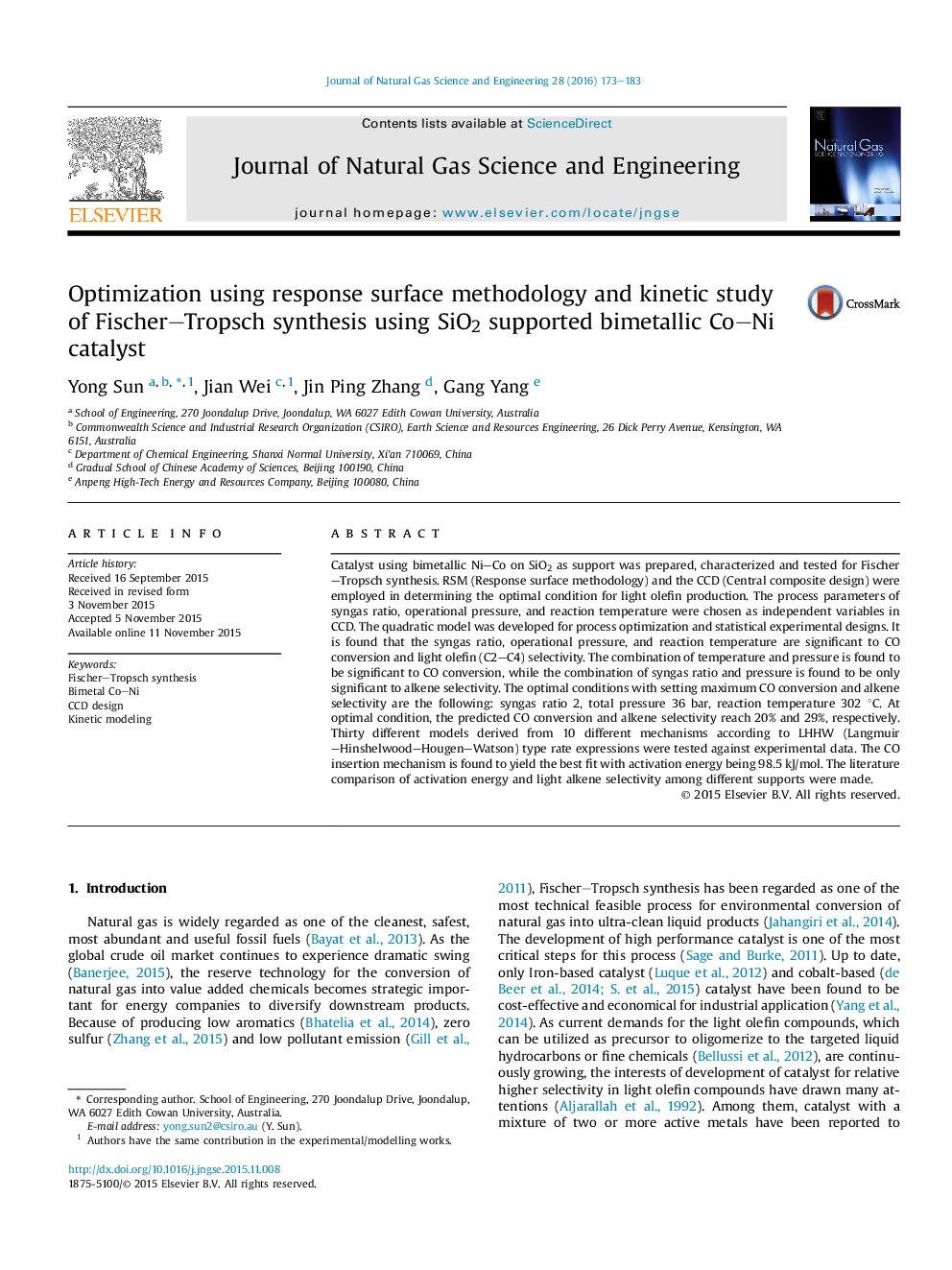| کد مقاله | کد نشریه | سال انتشار | مقاله انگلیسی | نسخه تمام متن |
|---|---|---|---|---|
| 1757279 | 1523013 | 2016 | 11 صفحه PDF | دانلود رایگان |

• Catalyst of using bimetallic Ni–Co on SiO2 as support was prepared.
• Kinetic modeling suggests CO insertion mechanism yielding the most reasonable results.
• Performance of light olefin selectivity was compared among different literature reports.
Catalyst using bimetallic Ni–Co on SiO2 as support was prepared, characterized and tested for Fischer–Tropsch synthesis. RSM (Response surface methodology) and the CCD (Central composite design) were employed in determining the optimal condition for light olefin production. The process parameters of syngas ratio, operational pressure, and reaction temperature were chosen as independent variables in CCD. The quadratic model was developed for process optimization and statistical experimental designs. It is found that the syngas ratio, operational pressure, and reaction temperature are significant to CO conversion and light olefin (C2–C4) selectivity. The combination of temperature and pressure is found to be significant to CO conversion, while the combination of syngas ratio and pressure is found to be only significant to alkene selectivity. The optimal conditions with setting maximum CO conversion and alkene selectivity are the following: syngas ratio 2, total pressure 36 bar, reaction temperature 302 °C. At optimal condition, the predicted CO conversion and alkene selectivity reach 20% and 29%, respectively. Thirty different models derived from 10 different mechanisms according to LHHW (Langmuir–Hinshelwood–Hougen–Watson) type rate expressions were tested against experimental data. The CO insertion mechanism is found to yield the best fit with activation energy being 98.5 kJ/mol. The literature comparison of activation energy and light alkene selectivity among different supports were made.
Journal: Journal of Natural Gas Science and Engineering - Volume 28, January 2016, Pages 173–183